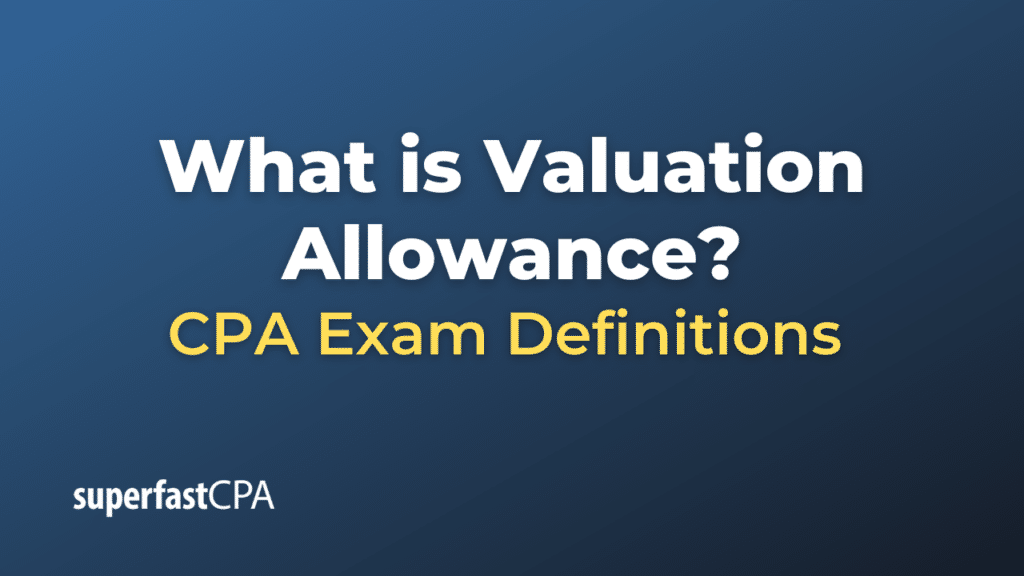Valuation Allowance
In accounting, a valuation allowance is an account that offsets a deferred tax asset when it is more likely than not that some portion or all of the deferred tax asset will not be realized. Essentially, it reduces the value of deferred tax assets to an amount that is expected to be realized in future tax returns.
Background on Deferred Tax Assets
A deferred tax asset arises when a business has overpaid taxes or has carryforward benefits like Net Operating Losses (NOLs), tax credits, or differences in depreciation. These assets can be used to offset future tax liabilities. However, for these assets to be useful, the company must generate enough taxable income in the future.
Why Use a Valuation Allowance?
If a company determines that it’s more likely than not that it will not have sufficient taxable income in the future to use these deferred tax assets, it must set up a valuation allowance. The phrase “more likely than not” generally means a likelihood of more than 50%.
Accounting Treatment
The valuation allowance is accounted for as a contra-asset account that negates the balance of the deferred tax asset. The offsetting credit is usually to the income tax expense, which has the effect of increasing it, thereby reducing net income.
- Journal Entry to Record Valuation Allowance
- Debit: Income Tax Expense
- Credit: Valuation Allowance (a contra-asset account)
Example of Valuation Allowance
Let’s continue with the fictional example of XYZ Corp to demonstrate how a valuation allowance works in practice.
Scenario: Future Income Projections at XYZ Corp
XYZ Corp has a Deferred Tax Asset of $100,000 on its balance sheet, generated due to Net Operating Losses (NOLs) from previous years. However, after evaluating the future business prospects and income projections, the company concludes that it will not be able to realize the entire deferred tax asset.
Step 1: Estimating Realizable Deferred Tax Asset
After a thorough evaluation, XYZ Corp estimates that it is more likely than not that only $70,000 of the $100,000 Deferred Tax Asset will be realized in future periods. Therefore, a valuation allowance needs to be created for the difference, which is $30,000.
Step 2: Recording the Valuation Allowance
To accurately reflect the amount of the Deferred Tax Asset that is expected to be realized, XYZ Corp will record a valuation allowance with the following journal entry:
- Journal Entry for Valuation Allowance:
- Debit: Income Tax Expense $30,000
- Credit: Valuation Allowance $30,000
This entry increases the income tax expense for the period, thereby reducing net income, while also creating a contra-asset account to offset the Deferred Tax Asset.
Step 3: Reporting on the Balance Sheet
On the balance sheet, the Deferred Tax Asset and its corresponding Valuation Allowance would be reported as follows:
- Deferred Tax Asset: $100,000
- Less: Valuation Allowance: $30,000
- Net Deferred Tax Asset: $70,000
Summary
By creating a valuation allowance of $30,000, XYZ Corp is adhering to the principle of conservatism, providing a more realistic view of the amount of Deferred Tax Asset that is likely to be realized in the future. This ensures that the financial statements do not overstate assets and better reflect the company’s financial condition.
The valuation allowance is re-evaluated each reporting period based on the latest available information. If future income prospects improve, XYZ Corp may reduce or even eliminate the valuation allowance, reversing the process. On the other hand, if the future prospects worsen, the company may need to increase the valuation allowance, recognizing additional income tax expense.













